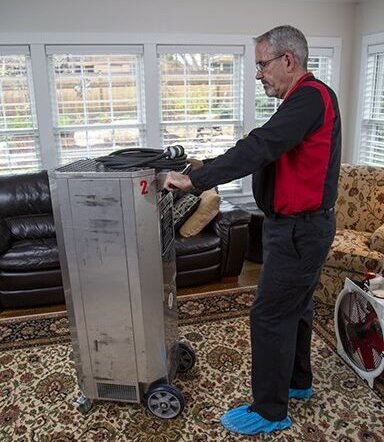Trusted Kings Pest Control Cincinnati OH: Professional Services
Wiki Article
Sorts Of Bug Control: Which Method Is Right for Your Infestation?
When encountered with a pest infestation, the option of a suitable approach for bug control is vital in effectively taking care of the scenario. From chemical treatments to biological solutions, there exists a series of strategies that can be employed to address various kinds of pests. Each technique includes its own set of advantages and factors to consider, making the decision-making process a nuanced one. Recognizing the nuances of each strategy and evaluating their compatibility with the certain insect problem at hand is essential for accomplishing long-term success in pest monitoring. By exploring the different sorts of bug control approaches available, individuals can make enlightened choices customized to their one-of-a-kind situations, making sure an extra lasting and effective end result in parasite eradication.Chemical Bug Control
Chemical pest control involves making use of synthetic or naturally obtained chemicals to take care of and get rid of pest populaces effectively. This method is typically used in agriculture, forestry, and residential setups to fight a wide variety of parasites, consisting of rodents, insects, and weeds. Using chemical pesticides can offer fast and targeted services to pest infestations, making it a prominent choice for lots of people and services.One of the essential benefits of chemical bug control is its capability to quickly eliminate insects, minimizing the danger of damages to plants, residential or commercial property, and human health. By utilizing details chemicals that target particular bugs, this technique can efficiently manage invasions while decreasing damage to advantageous microorganisms and the atmosphere when used appropriately.
Nevertheless, the usage of chemical pest control likewise increases issues regarding possible unfavorable results on non-target types, water sources, and human health. It is important to adhere to security standards, apply chemicals responsibly, and think about alternate bug control techniques to reduce these threats and make sure sustainable bug monitoring methods.
Organic Insect Control
Biological parasite control, additionally known as biocontrol, utilizes living microorganisms to manage and decrease insect populaces naturally. By using the parasite's natural killers or microorganisms, biological insect control offers a ecologically pleasant and sustainable remedy to pest monitoring.
Mechanical Bug Control
Making use of hand-operated and physical approaches to take care of parasite populaces, mechanical insect control offers a different method that does not rely upon using living organisms or synthetic chemicals. This approach involves using barriers, catches, or other tools to literally discourage or remove pests. By obstructing insect entry factors or establishing up catches to capture them, mechanical bug control can successfully lower problems without introducing chemicals into the atmosphere.One common instance of mechanical insect control is the use of mesh screens on doors and windows to avoid bugs from going into structures. This basic yet effective method functions as a physical barrier, maintaining pests out while enabling appropriate air flow. Furthermore, devices like mousetraps, fly swatters, and ultrasonic repellents drop under the mechanical pest control group.
While mechanical bug control approaches can be labor-intensive and require normal surveillance and maintenance, they use a environmentally friendly and sustainable remedy for handling pest invasions. By incorporating various mechanical techniques, a knockout post homeowner can develop a detailed insect control approach that reduces reliance on chemical pesticides.
Physical Parasite Control

Some common physical bug control techniques include using barriers such as displays or nets to stop parasite entry, traps to capture and eliminate parasites, and hand-picking to physically remove pests from plants or structures. Additionally, techniques like warmth treatments can be used to regulate bugs like bed insects by raising the temperature to degrees that are dangerous to the pests.
Physical pest control is especially useful in incorporated pest management (IPM) approaches, where multiple bug control methods are incorporated for reliable bug monitoring while reducing using chemicals. By utilizing physical pest control techniques, people can effectively deal with pest invasions with minimal environmental influence.
Integrated Bug Monitoring
When carrying out physical bug control approaches as part of parasite management approaches, Integrated Insect Administration (IPM) emerges as an extensive technique that leverages numerous techniques to efficiently regulate pest populations. IPM concentrates on long-term prevention of pests with a combination of biological, social, physical, and chemical tools tailored to specific pest problems. By incorporating several control strategies, IPM aims to lessen the threats related to parasites while also decreasing dependence on chemical options.One key aspect of IPM is the focus on surveillance and evaluating pest populations to figure out the most proper control techniques. This proactive method permits very early intervention and targeted strategies, bring about extra effective insect monitoring. Furthermore, IPM advertises eco pleasant practices by focusing on non-chemical control methods and only utilizing chemicals as a last resort.
Verdict

By making use of the pest's all-natural predators or pathogens, biological parasite control provides a lasting and eco friendly option to pest monitoring. - Kings pest control cincinnati oh
Using physical and hands-on approaches to manage parasite populations, mechanical insect control supplies a different approach that does not depend on the usage of living microorganisms or synthetic chemicals.An efficient strategy to handling insect populaces without counting on chemical or organic methods entails the use of physical pest control strategies.When applying physical parasite control techniques as part of bug administration techniques, Integrated Parasite Monitoring (IPM) arises as a thorough bee removal method that leverages various strategies to successfully manage pest populaces. Chemical pest control involves the use of chemicals, biological bug control uses natural predators, mechanical pest control includes physical barriers, physical pest control consists of trapping or getting rid of parasites, and incorporated pest monitoring incorporates numerous techniques for a holistic approach to pest control.
Report this wiki page